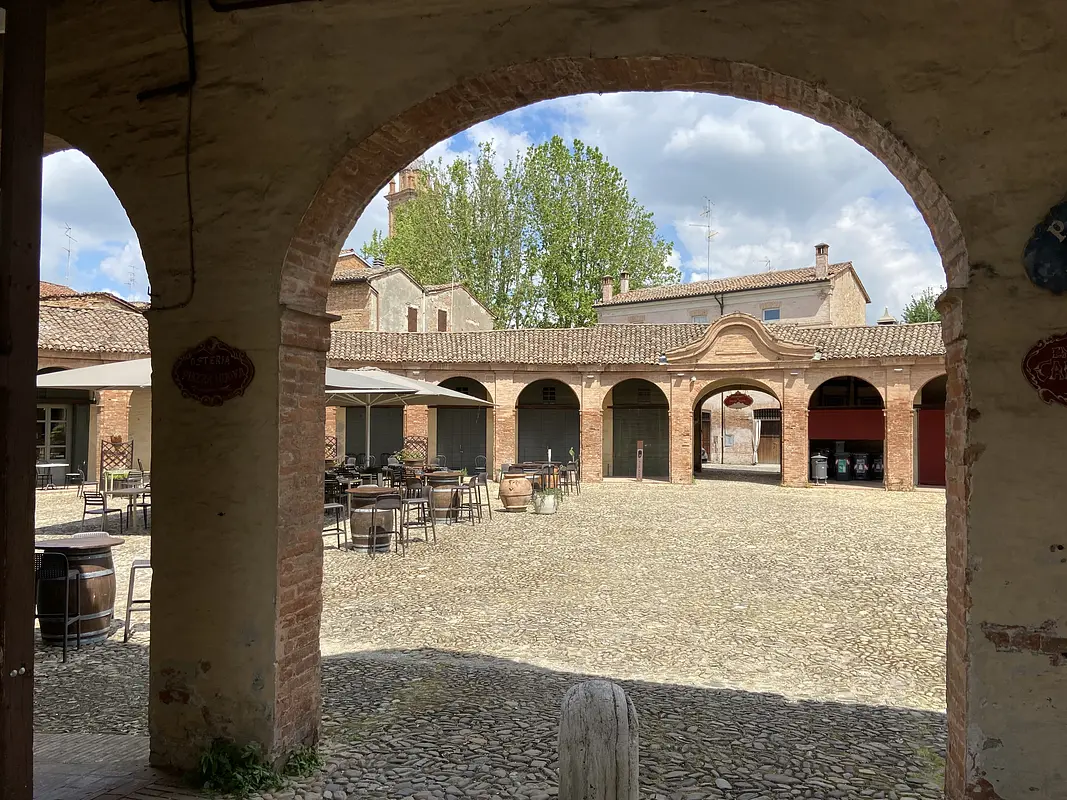














Bagnacavallo, beautiful village of the plains
Amazing village, home of brigands, ladies and a unique square


Where

What is and where is Bagnacavallo
Bagnacavallo is a beautiful village in the province of Ravenna. Its center, partly porticoed like many villages in Romagna, is a sinuous tangle of narrow streets in which it is nice to get lost while discovering a series of interesting buildings: the Municipal Theater named after Goldoni, who lived in the town because his father practiced medicine there, the Civic Tower, the Convent of San Francesco, now the site of exhibitions and events, and the Castellaccio. The most striking spot, however, is Piazza Nuova, the first example in Romagna of a center equipped for commerce, practically a shopping center ante litteram.
Why it's special: Piazza Nuova
Not many villages can boast a square similar to Piazza Nuova. It is entirely enclosed by a unique, essential and elegant building(Vittorio Gassman chose it to set the televised reading of the first canto of Dante's Inferno there): an elliptical brick loggia with a succession of 30 round arches on square pillars and two arched entrances. The pavement is terracotta under the arches, cobblestone on the square. Once home to several butchers' and fishmongers' stores, today there are artisan workshops and a delightful osteria where you can stop to enjoy cappelletti or passatelli.
Not to be missed: San Pietro in Sylvis
A visit to Bagnacavallo, however, cannot ignore the \strong> oldest parish church in Romagna, the parish church of San Pietro in Sylvis, a splendid example of proto-Romanesque architecture, on the pattern of the basilicas of Ravenna. The interior preserves fascinating frescoes ranging from Byzantine to Renaissance art, the most interesting being those by Pietro da Rimini, where, among the characters immortalized by the painter, is a portrait of Dante Alighieri. The church can be dated to the 7th century, the frescoes by Pietro da Rimini to 1320.
Curiosities in the hamlet of Villanova
To complete the exploration, it is worth visiting, in the hamlet of Villanova, theEcomuseum of Marsh Grasses, which documents the ancient poor art of processing five grasses, reed, stiancia, lake rush, sedge and prickly rush, with which baskets, stuffed chairs, slippers, and vests were made. Also inside the museum is the curious "Inn of the Merry Underwear," named after the late 19th-century early 20th-century underpants hung on laundry wires above the tables. Also worth a visit is the Museo civico delle Cappuccine, which contains some notable works of art.
A bit of history and the origin of the name Bagnacavallo
Bagnacavallo, whose name originates from an ancient ford whose passage precisely forced the horse's legs to get wet, is of very ancient origin. It was first Celtic and then, after bitter battles, Roman. After the barbarian invasions it was recaptured by the Byzantines who made it, unsuccessfully, an outpost in the fight against the Lombards. In the Middle Ages it passed from lord to lord, not all of them quite right if even Dante mentions them in the Purgatory with a scornful line, "Ben fa Bagnacaval che non rifiglia," referring to the Malvicini dynasty and wishing the end of their rule over the city.
Enter the Map of Italy's Undiscovered Wonders and find treasures where you least expect it... Inspire, Recommend, Share...
Contacts
The Map thanks:
In the Community
Enter the Map of Italy's Undiscovered Wonders and find treasures where you least expect it... Inspire, Recommend, Share...
Where

Contacts

